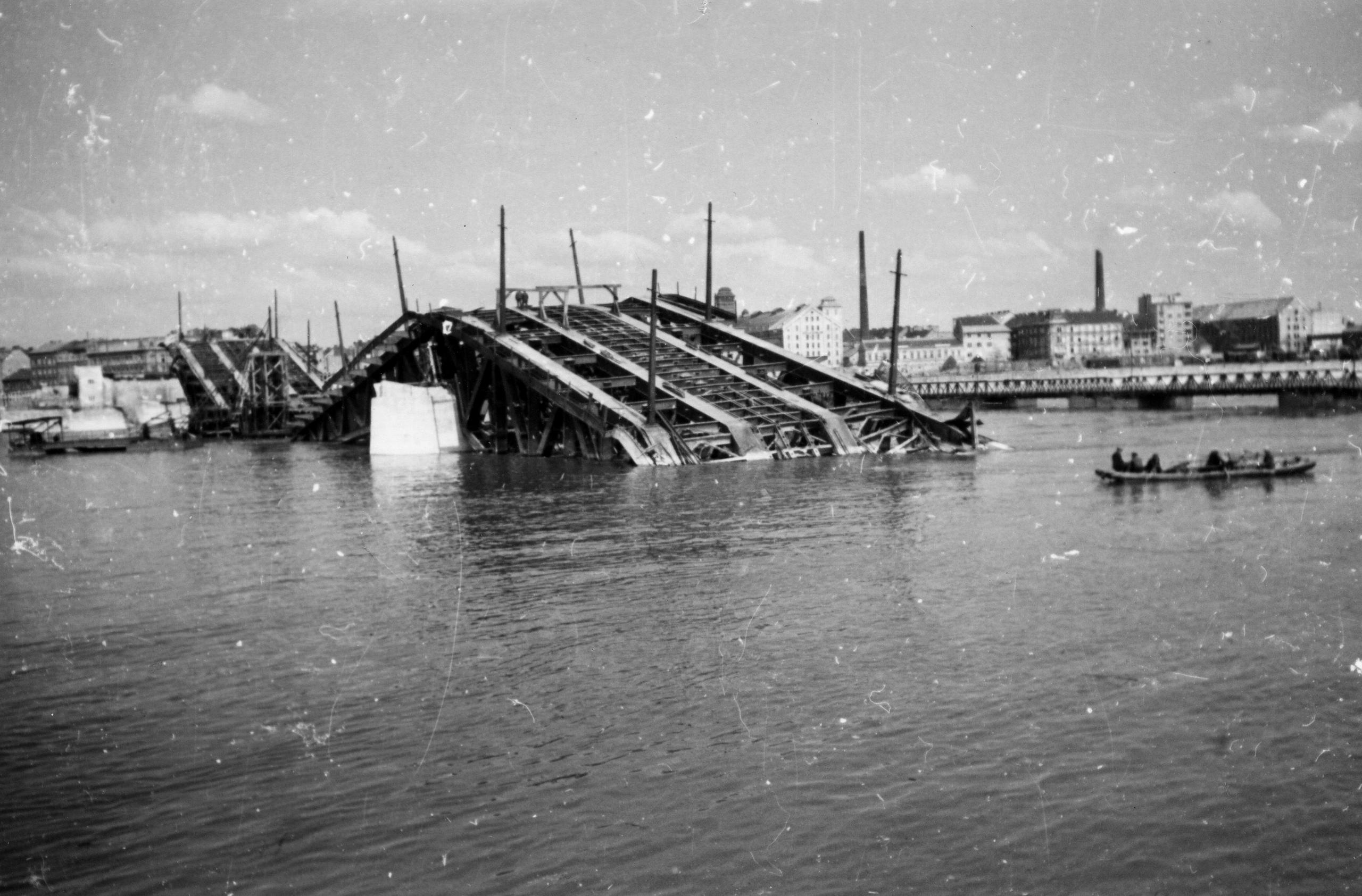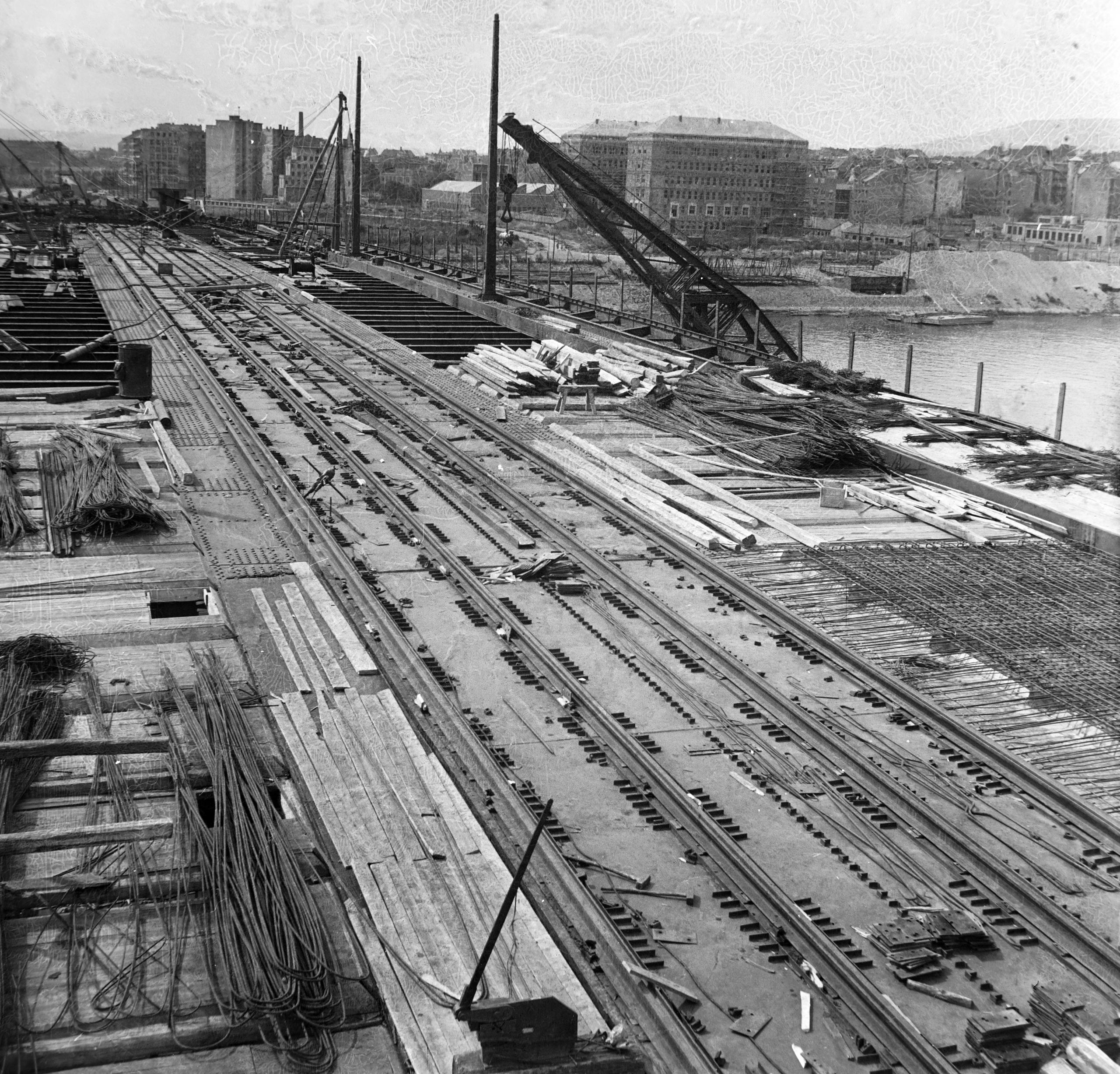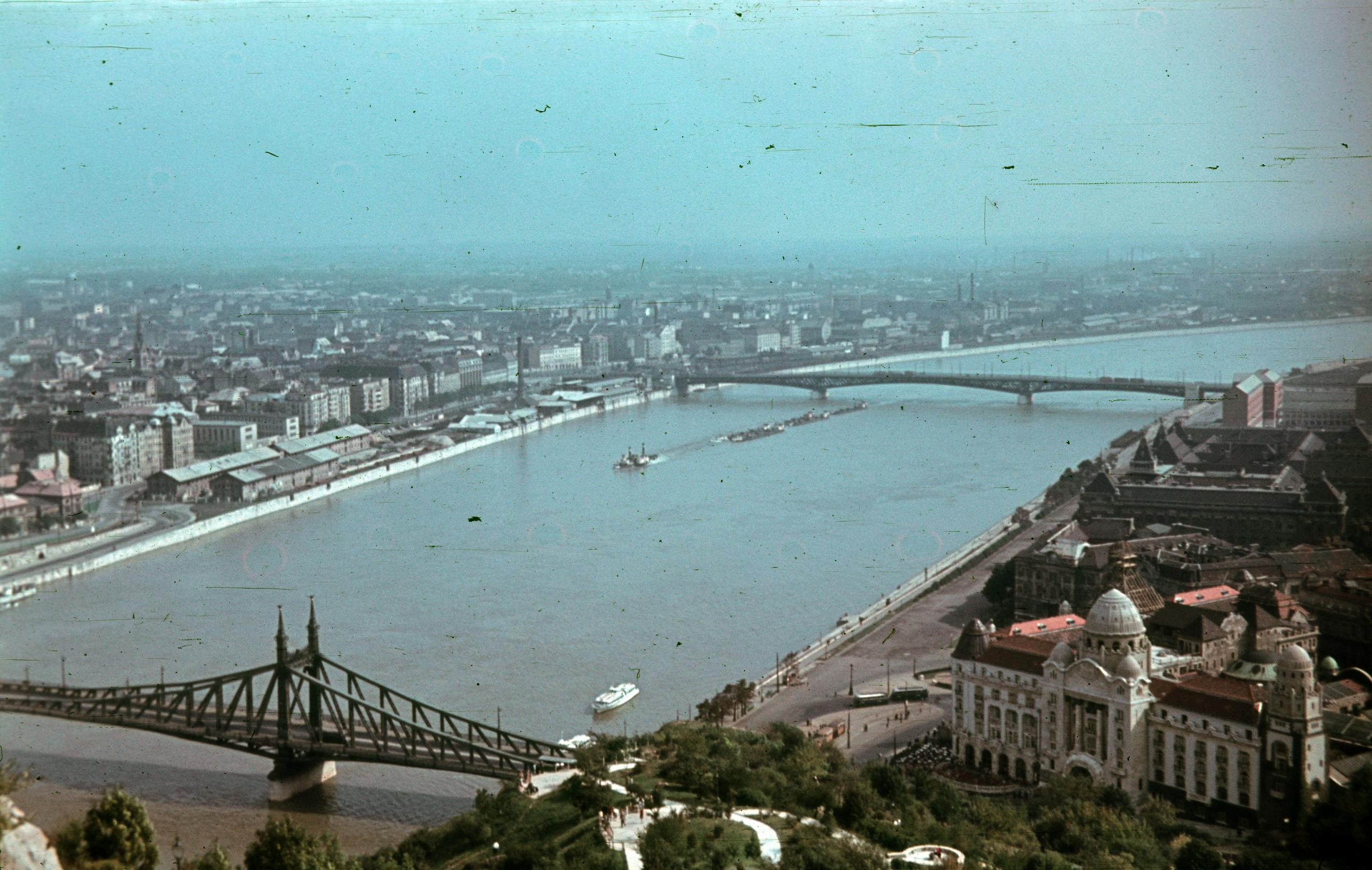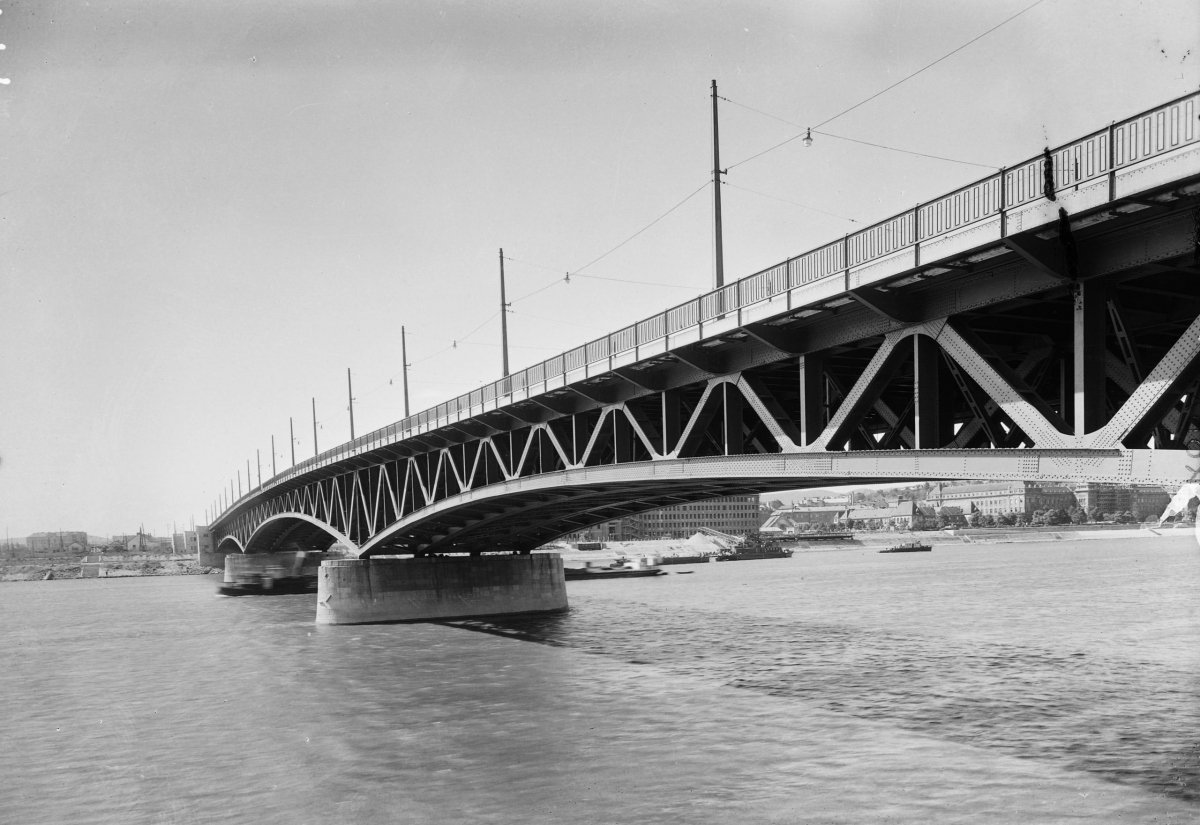The Petőfi Bridge is one of the busiest bridges in Budapest today. Yet what was the reason that almost every other bridge preceded it during the major reconstructions after 1945? The reasons include traffic and political factors. Take a look at what the traffic causes were.
When the Petőfi Bridge, the former Horthy Miklós Bridge was handed over in 1937, there was hardly anything on the Buda side, this part of the city only began to be integrated somewhat in the 1950s, since the construction of the Lágymányosi housing estate also began in 1954. Between the two wars, even car traffic to the Balaton was not significant, and Vienna could not be reached here, but through Óbuda, on the Bécsi Road. Since its opening, Horthy Miklós Bridge had fewer vehicles than the much narrower Ferenc József Bridge or Chain Bridge, so it was the least trafficked crossing in Budapest.
After the war, the temporary bridges could bear the sparse traffic, since from the 1950s, until 1958, only the privileged could have their own cars. Railway reasons did not require the rapid restoration of the bridge either (but it did on the Árpád Bridge since rail traffic was carried out on it until 1955), because the connection was restored very quickly on the Connecting Railway Bridge.

The blown-up Horthy Miklós Bridge (Photo: Fortepan/No.: 52041)
The political reasons are a bit more interesting. Take a little deeper look into the past, why was the Horthy Miklós Bridge built in 1937 at all, if in fact there were hardly any neighbourhoods in South Buda that needed a bridge here? The reason for this was the great economic crisis because it caused significant unemployment, which the government wanted to alleviate with public works. The construction of the bridge here came in handy for this, which used many workers' hands. The other possible location for a bridge was Óbuda, but here the preparations were not at such a level that it would have been possible to start building a bridge quickly.
However, after 1945, the new government - taking advantage of the fact that the original name of the bridge was Horthy Miklós Bridge - claimed that this crossing was only built in the 1930s as an act of seigniory, and the northern one, the Árpád Bridge, would have been more important, which was completed by the "workers' power" in 1950. (The construction of the Árpád Bridge was only started before the war, it was half-finished by the end of the war).

Reconstruction of the bridge (Photo: Fortepan/Uvaterv)
A pontoon bridge with a relatively large capacity operated at Boráros Square, the one that was previously used to replace the Erzsébet Bridge between Petőfi and Döbrentei Square, and was thus called the Petőfi pontoon bridge, while the old Horthy Miklós Bridge was increasingly called the Boráros Square bridge after 1945.
Its reconstruction was started only after the handover of the Liberty Bridge in 1946, the Chain Bridge in 1949 and the Árpád Bridge in 1950. The structure was built according to the old plans, only slightly modified. The bridge is a girder bridge with four parallel truss main girders. The two sides were placed slightly farther than on the original bridge, so the roadway of the bridge became 18 metres wide instead of the previous 15.7 metres, and the sidewalks, which in 1952 also included a bicycle track, widened from 3.5 to 3.8 metres.
The bicycle track was really necessary, since private cars were not allowed in this period, and many people were forced to go to work by bicycle. The total width of the bridge increased from 22.7 metres to 25.6 metres, i.e., by almost 3 metres. For the new bridge, 50 per cent of the wreckage of the old bridge was used - of course, re-manufactured - but it was possible to save some material, so the new structure became 500 tons lighter, and the steep ascent of the bridge was also slightly moderated. The Naval Memorial that used to stand on the Buda side was demolished.

The bridge is still in its original state with the Naval Memorial (Photo: Fortepan/No.: 20747)
The new bridge was painted grey, while the pre-war structure was blue, but nobody really cared when it was handed over on 22 November 1952. Huge crowds were already common at bridge inaugurations at that time, as were the series of politicians' speeches. Magyar Nemzet reported on the inauguration as follows on 23 November 1952:
"At the end of his speech, the minister expressed his gratitude to the workers, engineers, and technicians who participated in the construction of the bridge, who have now enriched our capital with another huge structure of peace. On behalf of the working people of the capital, Kálmán Pongrácz, President of the Executive Committee of the Budapest City Council, took over the bridge. The national colour ribbon stretched between the two railings of the Buda bridgehead was cut by the Minister of Transport Lajos Bebrits during a storm of applause from the crowd. Then, accompanied by the sounds of the band, under flags and signs, the heroic bridge builders marched across their creation, the new bridge, and then the tram, bus and pedestrian traffic started."
After the bridge was handed over, trucks, bicycles, horse-drawn carriages and handcarts were banned from the Liberty Bridge during the day, and this traffic was diverted to the new bridge, thus relieving the Liberty Bridge and increasing the traffic on the new one.

The rebuilt bridge from Gellért Hill in 1955 (Photo: Fortepan/No.: 129229)
It is interesting that in the middle of the Rákosi Era, during the darkest dictatorship, the bridge was not named after Rákosi or Gerő (there was already a bridge named after Stalin, the Árpád Bridge was then officially named after the Soviet dictator), but after Petőfi. The name was decided by the Capital Executive Committee, i.e. the highest body of the council, and the fact that the pontoon bridge that was temporarily erected here was called the Petőfi pontoon bridge may also have played a role in this. That is, the new permanent bridge inherited the name of the pontoon bridge that was moved here from its previous location, Petőfi Square.
Cover photo: The rebuilt Petőfi Bridge (Photo: Fortepan/Uvaterv)




































Hozzászólások
Log in or register to comment!
Login Registration